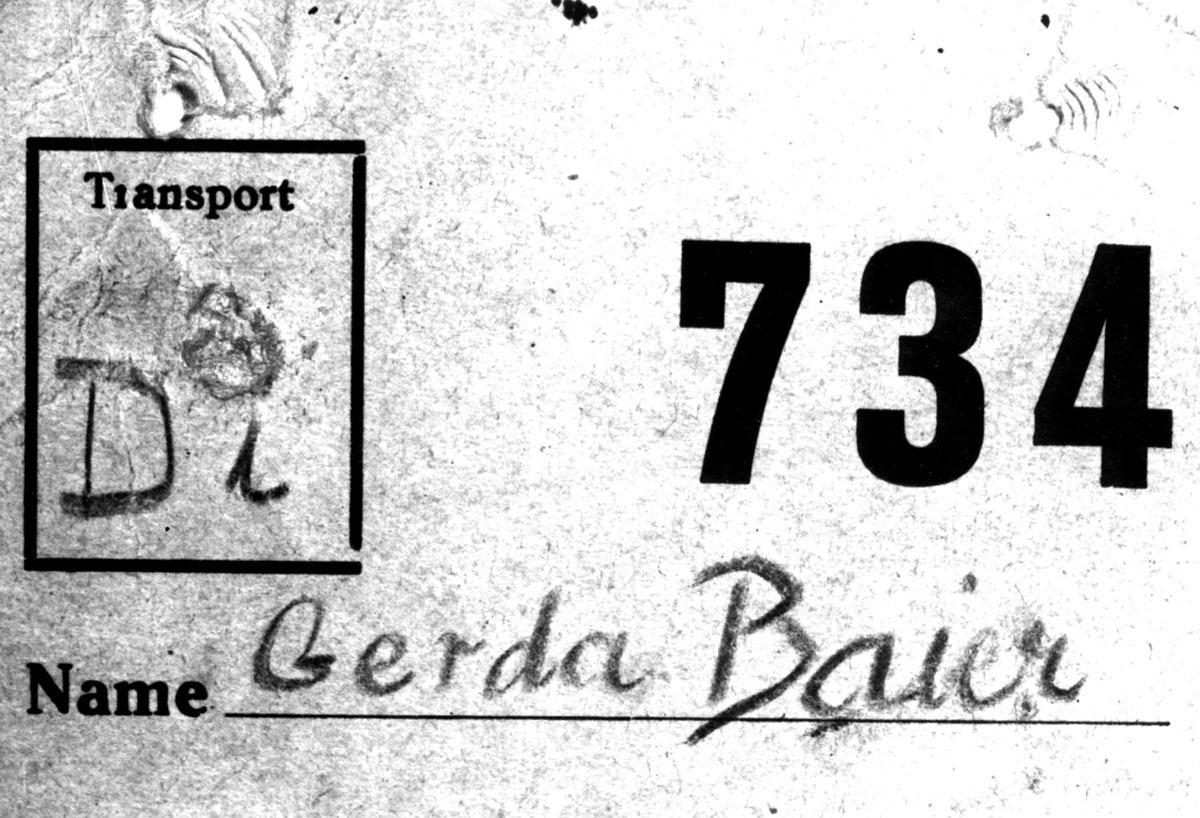The Terezin ghetto was established in October 1941, approximately 60 kilometers north of Prague. The first deportations of Jews to Terezin arrived in November 1941 from Germany, Austria, and Germany. Later on, Jews were also deported there from Denmark, Holland, Poland and Hungary. 35-year-old Gerda Baier was deported from Prague to Terezin on Transport D1 in July 1943. In total, 46,000 of the 56,000 Jews living in Prague were deported, some to Terezin, and others to the Lodz and Minsk ghettos, where they were imprisoned and later most were murdered.
By the fall of 1944, approximately 88,000 of the 140,000 Jews in the Terezin ghetto had been deported to extermination in the East. On 10 October 1944, after a little more than a year in the ghetto, Gerda and another 1,500 Jews were ordered to assemble in the "Hamburg Barracks", one of the buildings in the Terezin ghetto. They were permitted to take two pieces of luggage not exceeding 30 kg together, and they were not allowed to take any work tools. Those unable to carry their own luggage were allowed to use porters supplied by the traffic department of the Jewish council.
On 12 October 1944, Gerda was deported to Auschwitz on a transport known as Eq. The transport held 1,500 Jewish men, women and children. 37 were children under the age of 12, and some 250 were men and women over the age of 60. 8 of those were over 86. The train reached Auschwitz-Birkenau on 14 October. Out of the 1,500 deportees on this transport, we know of 108 who survived the war.
Gerda was murdered at Auschwitz shortly after her arrival, three months before the liberation of Auschwitz by the Red Army.
Yad Vashem Photo Archives 3357/147







